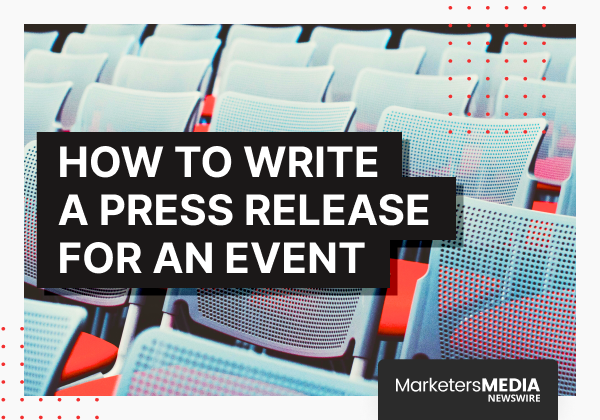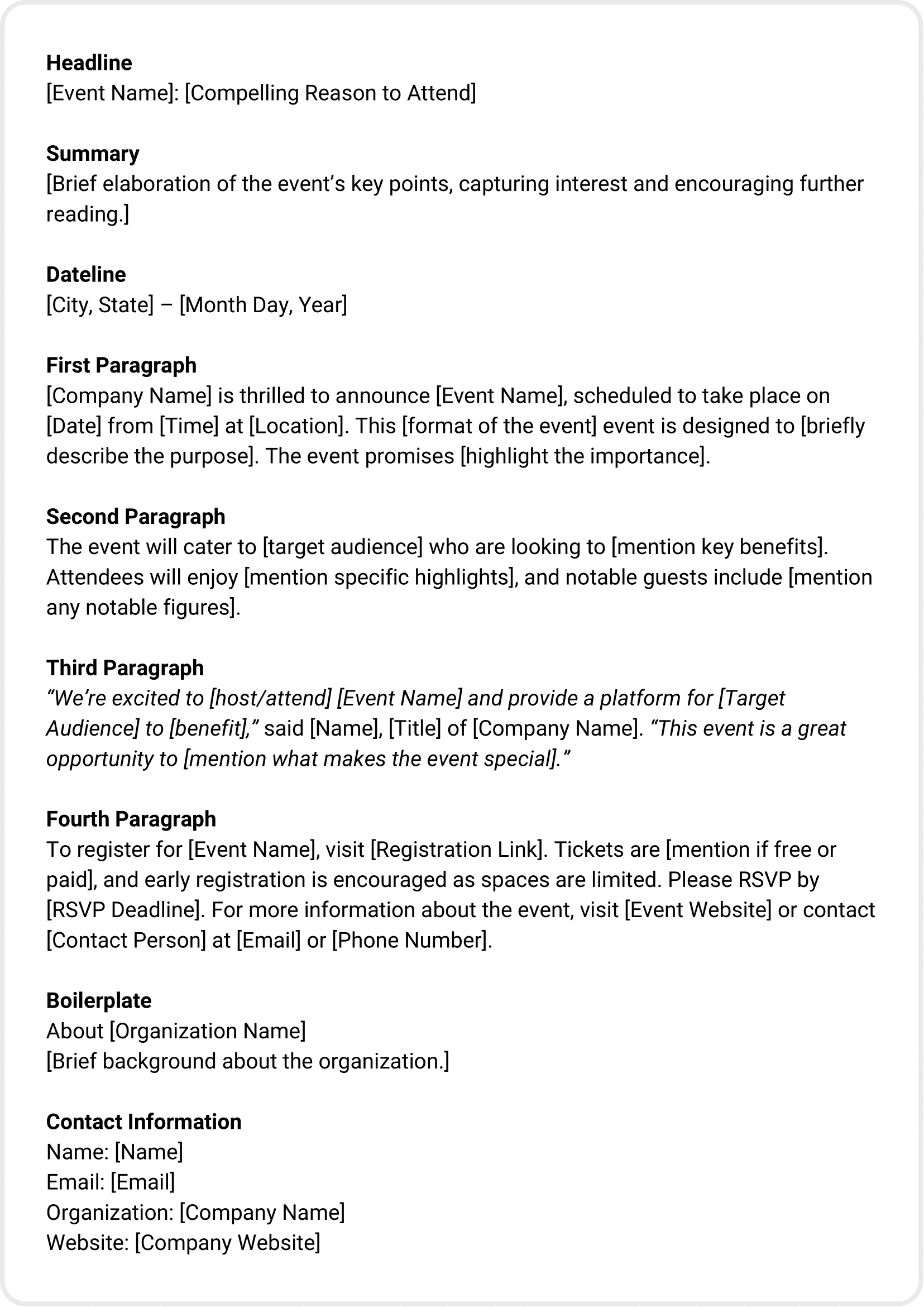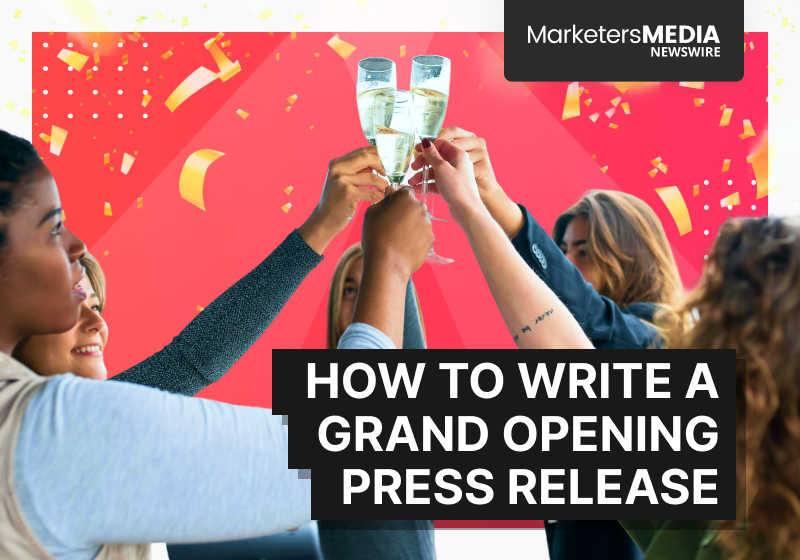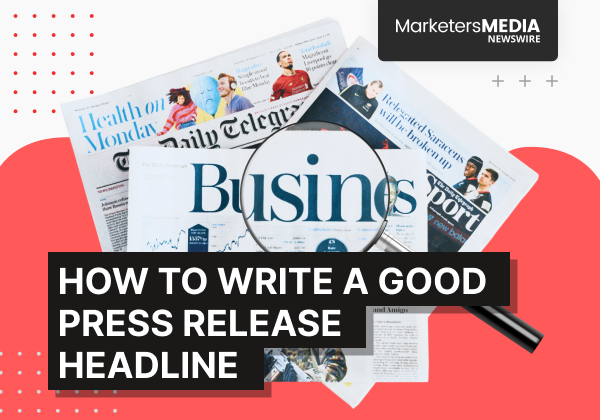Got an event coming up? You’ll want to spread the word far and wide, and press release is a great way to do so.
An event press release is a structured announcement that outlines the key details of your event: who, what, when, where, why, and how. Unlike general press releases, event press releases are all about driving interest and attendance.
Think of it this way: The usual press release is like a formal invitation to a party, explaining why it’s important and who’s involved.
An event press release, however, has a unique twist. It is more like an exciting social media post about the party, highlighting the fun activities and getting people interested and eager to attend.
They need to be compelling enough to convince people to mark their calendars and make plans to attend. Timing and clear calls to action are key components that set them apart from other types of press releases.
Why Do You Need an Event Press Release?
An event press release isn't just a formality—it's a crucial tool for making your event a success. Here are a few reasons why you need one:
#1 Get More People to Attend
The main goal is to have people show up, right? An event press release can help make that happen.
By sharing the important details and what makes your event special, you can attract potential attendees who might not have heard about it otherwise. A good press release can turn someone’s casual interest into a definite “I’ll be there!”.
#2 Build Brand Awareness
Getting media coverage for your event through a press release can significantly increase your organization's exposure. This means more people hear about you, way beyond your usual crowd.
And it’s not just about the event at hand—it helps more people recognize your brand moving forward.
#3 Gain Trust and Credibility
A professional press release portrays your event as legitimate and well-organized. It shows you mean business and have put in the effort into planning and promoting it. This make people more likely to trust and support your event, whether they're attendees, sponsors, or partners.
Types of Event Press Releases
Not all event press releases are created equal. Depending on the timing and purpose, there are different types you might need to consider:
#1 Pre-Event Press Release
These are sent out well in advance of your event. They include all the essential details and aim to build anticipation. Think of them as the first wave of promotion, designed to get people excited and mark their calendars.
Example:
#2 Day-of-Event or Live Event Press Release
These are used to provide last-minute updates and real-time information on the day of the event. They can highlight key moments, special guests, or unexpected changes, keeping the media and attendees informed and engaged.
Example:
#3 Post-Event Press Release
After your event, it's important to share the highlights and successes. Post-event press releases recap what happened, share notable quotes or testimonials, and showcase any media coverage or significant outcomes. These help in maintaining momentum and providing closure to your event promotion.
Example:
By understanding these different types, you can effectively plan your press release strategy to maximize impact at every stage of your event.
How to Write an Event Press Release
If press release writing is something you've done, you'll find that crafting one for an event is much the same. However, there are a few important differences to keep in mind.
Here are the key components of an Event Press Release:
#1 Headline
Your headline is the first thing people will see, so make it count. It should capture attention and provide a snapshot of the event.
- Keep it concise and impactful.
- Include the name of the event and a compelling reason to read further.
- Use active language to create a sense of excitement.
Here are a few action words to consider: Launching, Unveiling, Celebrating, Revolutionizing, Showcasing, Transforming.
Example:
#2 Summary
This is your elevator pitch. In 2-3 sentences, tell them: What's happening? Why it matters? And why should they care? Make it punchy and intriguing.
Example:
#3 Dateline
The dateline is your press release’s timestamp. This tells readers right off the bat where and when this news is coming from.
Example:
#4 Body
Now you spill the beans about your event.
Start strong with your first paragraph—it's the hook that'll keep people reading. Lead with the most exciting aspect of your event. Is it a groundbreaking speaker? A never-before-seen product reveal? Put that front and center.
This press release does this really well:
They've got everything you need to know - the who, what, when, where, why, and how - all packed into a few snappy sentences.
And what I love about this is how they've made something as potentially dry as a calligraphy exhibition sound exciting. A 40-pound iron brush? That's not something you see every day. It's details like these that make you go, "Huh, maybe I should check this out."
Then, as you move into the rest of the body, get into the specific details:
- Format of the Event: Is it in-person, virtual, or hybrid? Provide the location or link to the event.
- Why Attend: Explain the purpose of the event and what attendees will gain from it.
- Key Highlights: Highlight what makes the event special, like guest speakers, VIPs, sponsors, activities, workshops, and more.
- Quotes: Include a punchy quote from an event organizer or keynote speaker. Make it something that adds color, not just fluff.
- Registration Info: Be specific about registration details, fees, and deadlines. Nothing's worse than getting people excited and then not telling them how to sign up.
- Call to Action: Encourage readers to take immediate action, such as registering, buying tickets, or contacting for more information.
#4 Boilerplate
Think of the boilerplate as a mini 'About Us' section that provides context and credibility to your press release. Here's what to include in your boilerplate:
- A brief description of your organization
- Your mission or key values
- Any impressive stats or accolades
- How long you've been around
Keep it to about 3-4 sentences. It should give readers a quick but comprehensive snapshot of who you are.
Example:
#5 Contact Information
Include clear and accurate contact information for follow-up. You want to make it easy for journalists and interested parties to get in touch with you for more details or to arrange interviews.
Example:
Event Press Release Template Example
More Tips for Writing an Effective Event Press Release
Now, let’s dive deeper into some strategies that make your press release pop:
#1 Find Your Angle
Every event has a unique story. Maybe it's the first of its kind in your industry, or perhaps it's addressing a pressing current issue. Whatever it is, lead with that. It's what will make journalists sit up and take notice.
#2 Use Active Voice
“The awards ceremony was attended by hundreds of guests." is okay. "Hundreds of guests attended the awards ceremony." is better. Active voice adds energy and immediacy to your writing.
#3 Avoid Hype, Provide Value
Steer clear of excessive superlatives or overly promotional language. Instead, focus on providing valuable, factual information about the event. Let the details speak for themselves.
#4 Create a Sense of FOMO (Fear of Missing Out)
Highlight exclusive opportunities at your event. Will attendees get to network with industry leaders? Learn cutting-edge techniques? Make it clear that missing this event means missing out on something valuable.
#5 Use Data and Statistics
Numbers can add credibility and interest to your release. "Our annual tech conference" is fine, but "Our 10th annual tech conference, expected to draw over 5,000 attendees from 20 countries" is much more compelling.
#6 Include Relevant Keywords
Think about what terms people might search for related to your event. Sprinkle these naturally throughout your release. It'll help with SEO and make your release more discoverable.
#7 Keep it Scannable
Use bullet points, subheadings, and short paragraphs. Many journalists and readers will skim your release first, so make the key points easy to spot.
#8 Incorporate Visuals
Add logos, images from past events, or infographics to enhance your press release. Visuals can often convey information more quickly and memorably than text alone.
#9 Proofread, Proofread, Proofread
Nothing undermines your credibility faster than typos or grammatical errors. Have at least one other person review your release before sending it out.
With these tips, you'll craft a press release that not only informs but also inspires action. The next step is to get it in front of the right eyes.
How to Distribute Your Press Release?
To ensure your press release is seen by the right people, consider these distribution options.
#1 Leverage Your Website
Posting your press release on your own site is a crucial first step. It's great for SEO and provides information to those who already know your brand. However, it’s passive—it relies on people coming to you.
#2 Harness the Power of Social Media
Sharing your press release on social platforms can help spread the word, especially if you have a strong following. But again, you're largely reaching people who already know about you, and you might get lost in the social media noise.
#3 Build a Media List
This DIY approach involves creating your own list of relevant journalists and sending your release directly. It's more time-consuming but can lead to valuable personal connections.
But if you do choose this approach, don't be afraid to send a polite follow-up email if you don't hear back!
#4 Use Press Release Distribution Services
Now, here's where things get really interesting. Services like MarketersMEDIA Newswire can take your distribution efforts to the next level. Here's why they're often the most effective choice:
- Massive Reach: These services have established relationships with thousands of media outlets, journalists, and industry influencers.
- Targeted Distribution: You can select specific industries, regions, or demographics to ensure your release reaches the right people.
- Time-Efficient: Instead of manually sending your release to hundreds of contacts, you can distribute it widely with one submission.
- Credibility Boost: Releases from established distribution services often carry more weight with journalists.
- Detailed Analytics: Many services provide detailed reports on who viewed or interacted with your release, giving you valuable insights.
- Multimedia Options: You can often include images, videos, or other media to make your release more engaging.
While there's usually a cost involved, the time saved and potential reach often make it a worthwhile investment, especially for important events.
Speaking of saving time, if you're looking to streamline your press release writing process even further, consider trying our AI Press Release Generator. It can help you craft a professional, engaging press release in minutes, leaving you more time to focus on distribution and event planning.
Try Our AI Press Release Generator for FREE
Remember, your press release is competing with hundreds of others. Make it stand out by being clear, concise, and compelling.
Good luck with your event!
Free Press Release Template
Tell us where to send your PDF:









